This seems a little redundant, doesn’t it? Well, I don’t think so. I’ve been exploring these various cameras in different light shot by different sites and it was DPReview’s turn because they shoot a nice still life test image under very well controlled and very bright lights. Thus, we see how the cameras function when you are shooting sports in evening light and want to get really fast shutter speeds. (See, there is a madness to my method.)
So the usual rules apply. I download the RAW files and manipulate them to match as best I can. More importantly, each file is as good as I can get it with a certain level of noise and detail. Here, I chose to get the noise pretty low, thus risking the details a bit. But you will see that they responded well because of the abundant light.
Further, I took five crops, including some of my very favorites. I had one fellow respond to my second last test (the controversial one) that I should just look at the DPReview RAW files if I want to know the difference between the D800 and the m4/3 cameras. Well, that tells only part of the story because the defaults are rarely optimal for any particular use. I find them mildly interesting, but I find processed images much more interesting because it gives a clear idea of what is possible with the RAW files. That is what matters to me, not what the defaults look like. Heck, my guess is that there is a fair bit of randomness to the defaults and what would that tell you? (Hint: nothing interesting.)
Ok, let’s move on. As always, I will start with the four cameras’ output at web size. This is indicative of what you should expect with small prints. Probably close enough up to 8x10, especially in this abundant light. I will reverse the last sequence and start with the best one.
NOTE: The following complete (but severely reduced in size and compressed) images have been eliminated from this post at the request of DPReview.com as they do not agree that these fall under the “fair use” doctrine for commentary. If you are interested in seeing what these look like at web sizes, you can download the RAW images using the links I attached to the thumbnails and process them yourself, then reduce to web size.
Sorry …
BY the way, another alternative to looking at my processing would be to go directly to the comparator on the DPReview site (link provided below to the D800 page where the comparison is available) and select these four cameras to see how the RAW images look like at Adobe defaults. I consider that interesting, but not quite indicative of the ultimate potential of the images. Still, some prefer that method to mine. Here is a good entry point for that:
http://www.dpreview.com/reviews/nikon-d800-d800e/33
D800

D800 3200iso f/11 1/500
Wow … 1/500 at f/11 …. now that’s a lot of light!
D600
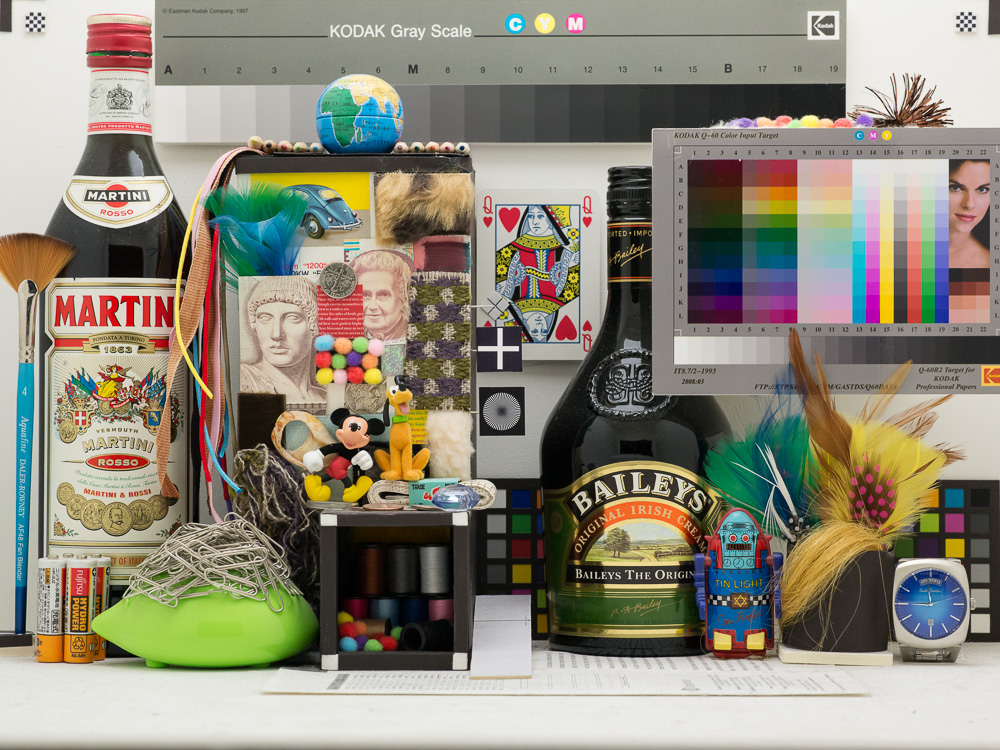
D600 3200iso f/11 1/400
Minus 1/5 stops of light. Interesting difference in metering. By now you would think that DPReview would know not to screw around with in camera meters and simply use a standard exposure with a hand held meter. Oh well …
OM-D E-M5

OM-D E-M5 3200iso f/6.3 1/800
Since diffraction sets early on m4/3 sensors, they kept it at f/6.3. Of course, crop factor 2 says that they achieve DOF similar to f/12.6 on full frame anyway.
GH2

GH2 3200iso f/6.3 1/1250
Yikes … the GH2 is given 1/2 stops less light than the OM-D. This is a familiar pattern by now and is a great reason for normalizing the exposures to a hand held meter. Luckily, there is enough light that the GH2 does not suffer much. But frankly, it would do better given the same amount of light as the OM-D.
So what you should be noticing about all of these is that they are all excellent! Seriously, I’m amazed at how clean they all look at this size. This is what drives people to say that all cameras look alike in bright light. Because it is becoming true. At least for web and small print display.
But you didn’t come here to see that stuff. You want crops
Crop 1
The infamous globe.
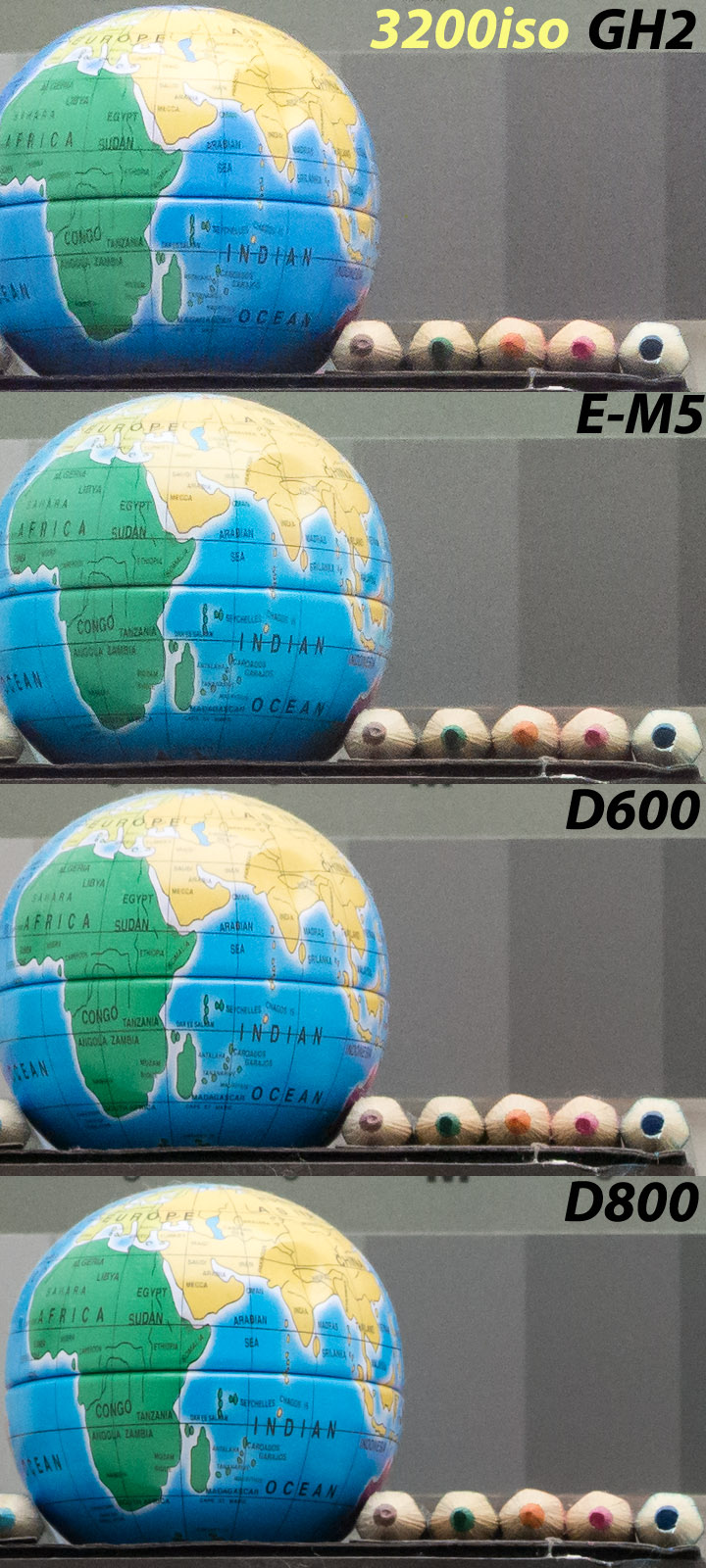
You will notice that the D800 is essentially perfect with the D600 only a hair behind. The OM-D is very good with the GH2 only a hair behind. Wow …
Crop 2
The watch and the hair. (Sounds like a mystery novel.)
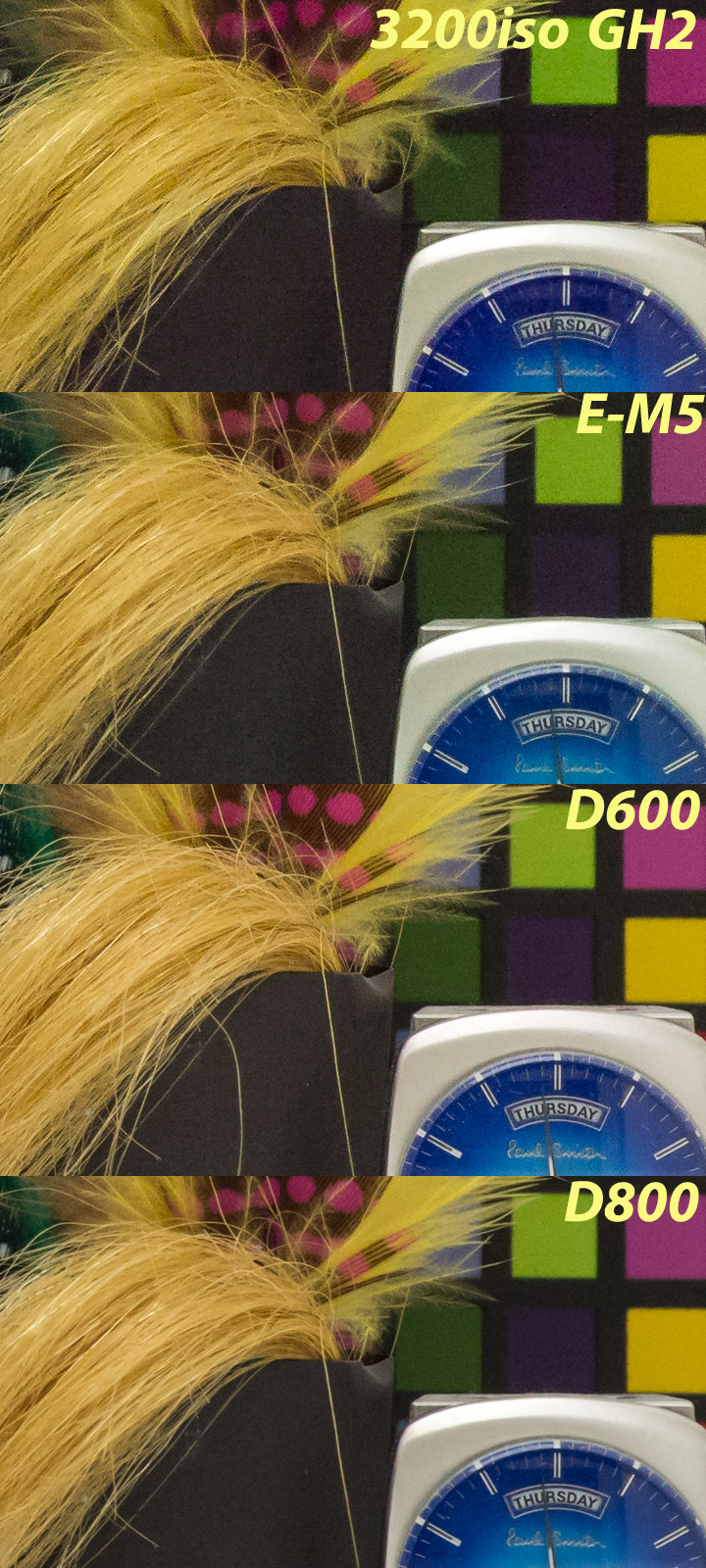
The same relationship holds again, although the GH2 is closer to the OM-D this time. Only some slight increased grain in the smooth patches gives way to the OM-D. The hair and watch are a draw. Very nice.
Crop 3
The coin, the etching and the needlepoint. (Another mystery novel.)
A very clear difference between the sensor sizes again. Little to choose between the two m4/3 cameras where the etching and the wool are concerned. The coin and the text are a bit cleaner though on the OM-D and the red is more saturated. But the difference is fairly subtle and this is the equivalent of looking at a 46” print from 20 inches. Never forget that.
Crop 4
Deep Shadow and the Paper Clips. (A great band name.)
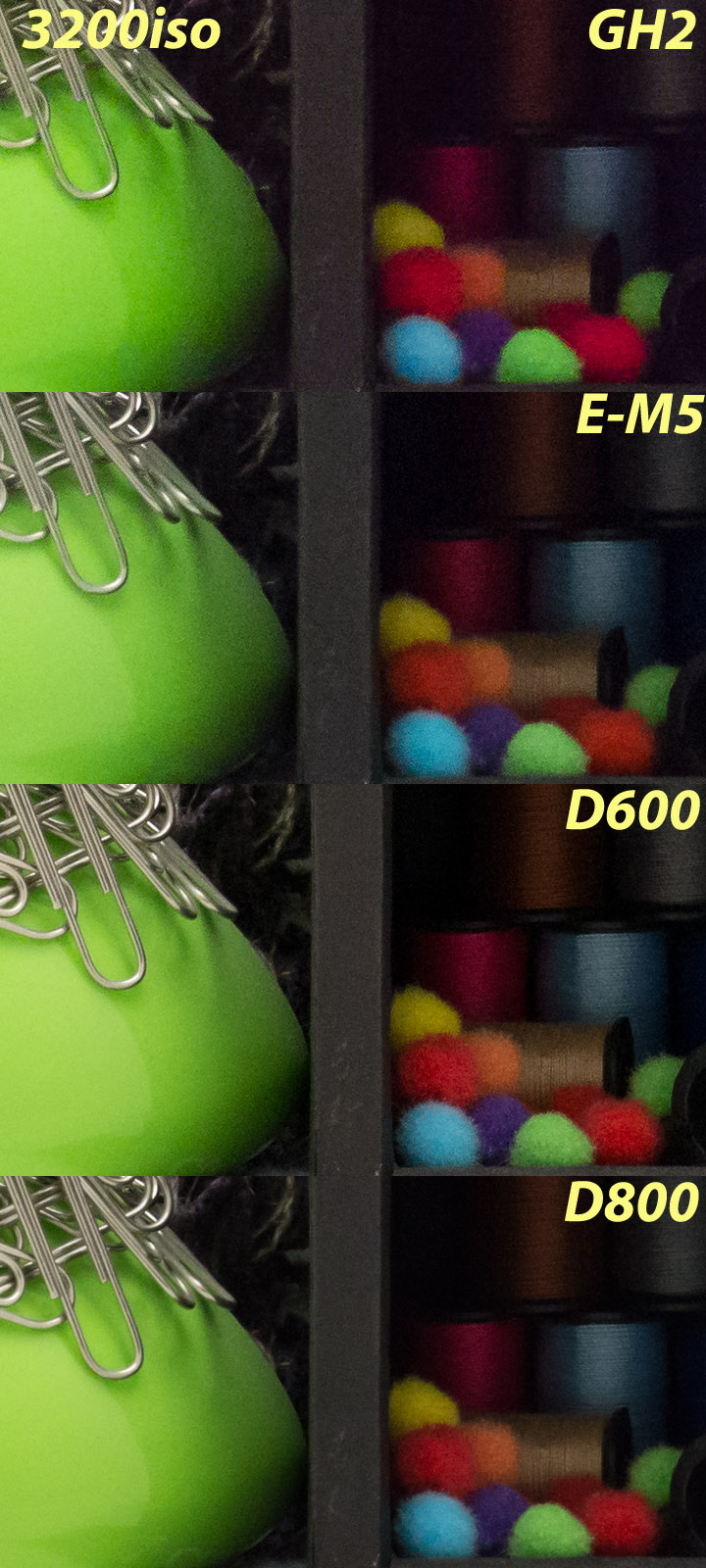
Again the full frame cameras look incredibly smooth. No surprise of course. The two m4/3 cameras still look great with the GH2 faring slightly worse, but mainly with color integrity and some extra grain. I find the GH2 a tad more splotchy and grainy in deep shadow. The detail remains, though, which will surprise a few people. This cam is still really good, especially I n decent light.
Crop 5
The bottle, the brush and the ropes. (Either a Narnia installment, or perhaps a game of Clue.)
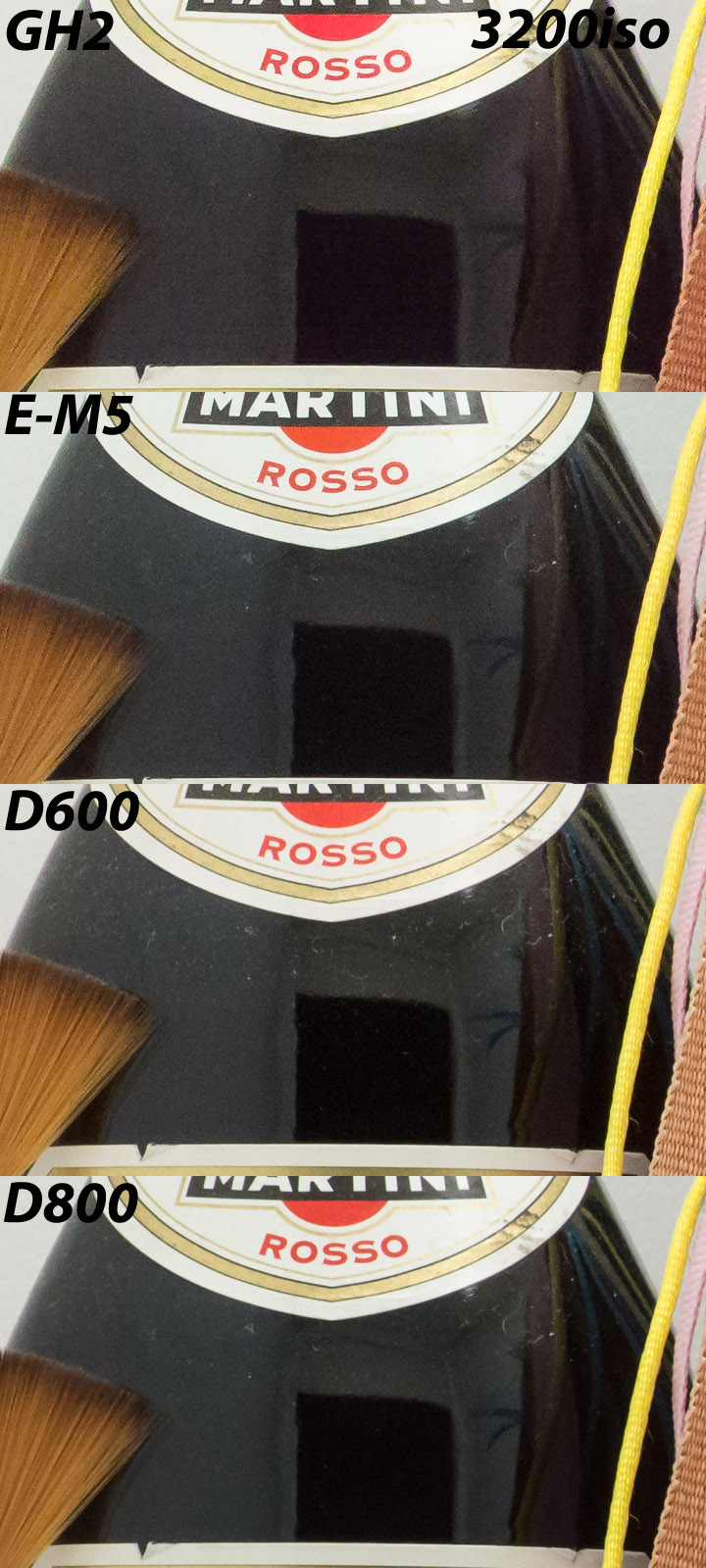
The bottle is getting pretty dusty over time lol. The smooth glass looks amazing for 3200iso on the full frame images. It is slightly grainier on the m4/3 images, but not overly. The brush is well rendered on all images, although it carries some grain in the m4/3 images. The ropes are surprisingly clear on all as well. This is impressive stuff. Minimal difference between the m4/3 cams this time round.
Conclusion
Wow. What can I say? At 3200iso under decent light these cameras all do a great job. The difference between the FF and m4/3 cameras is much less than I expected going into this comparison. Kudos to Sony and Panny for some pretty amazing sensors, especially in light of the Panny sensor being several years old by now with all the others being pretty new technology.
It’s a great time to be a high ISO shooter, that’s for sure.
